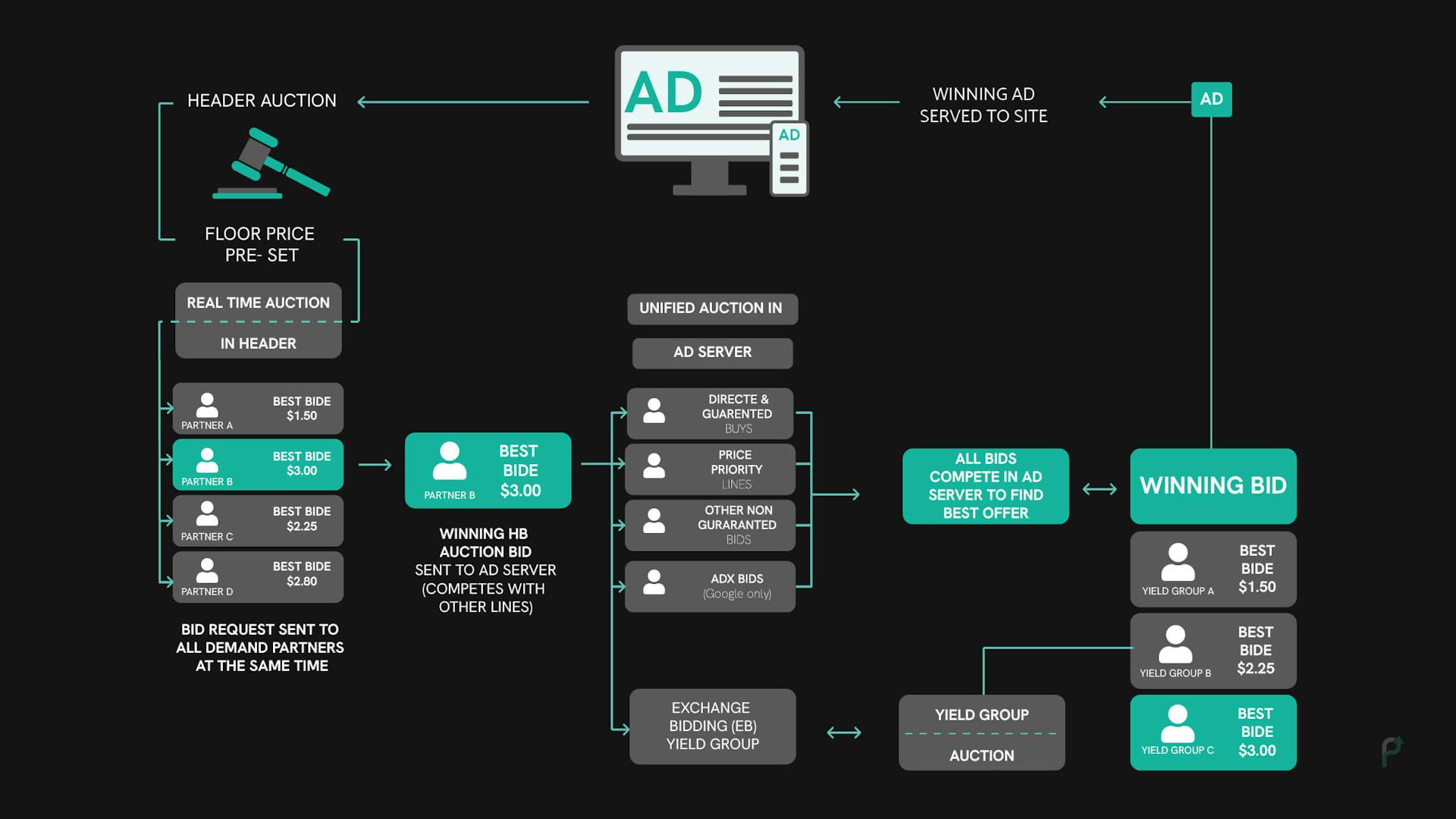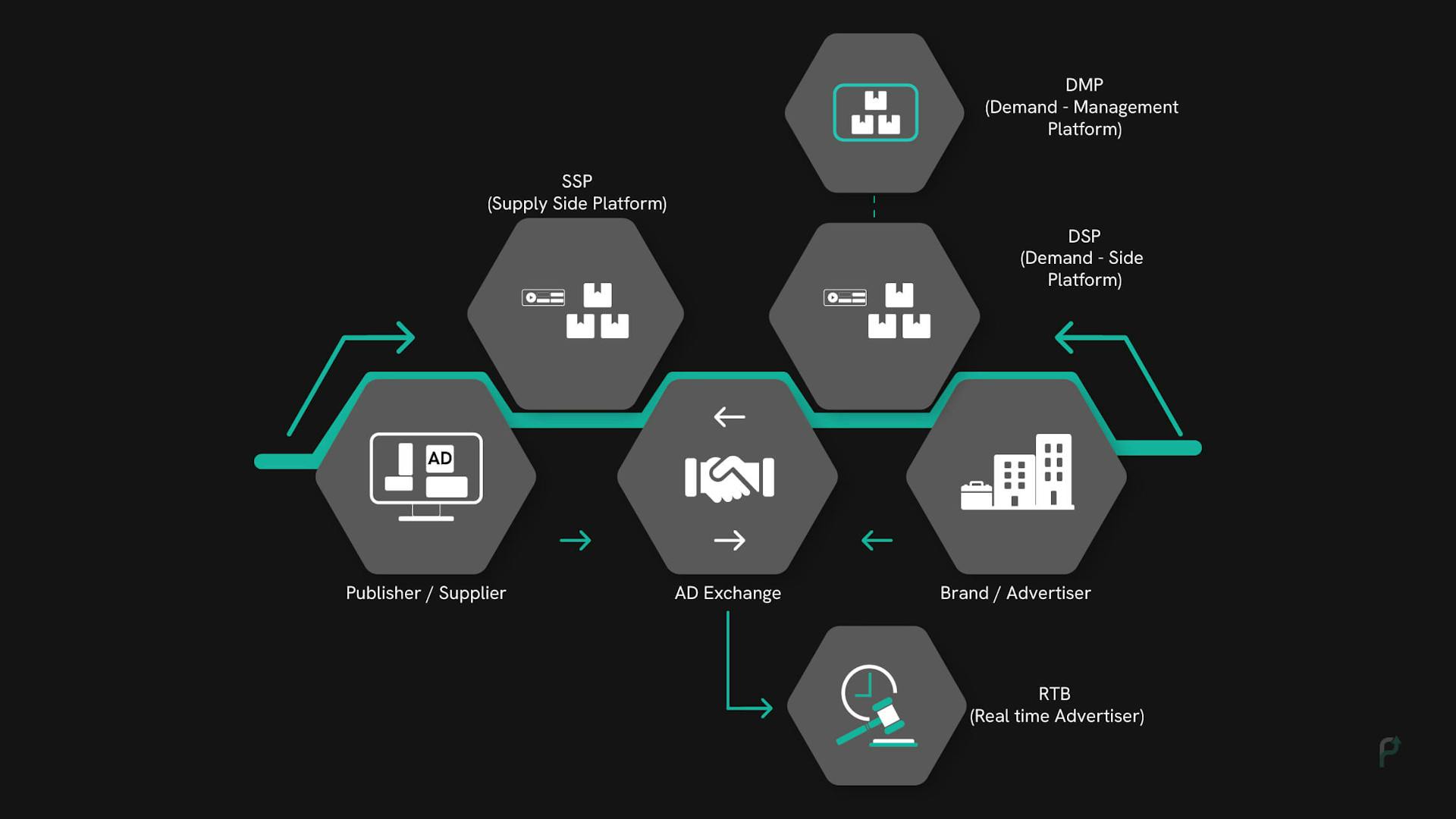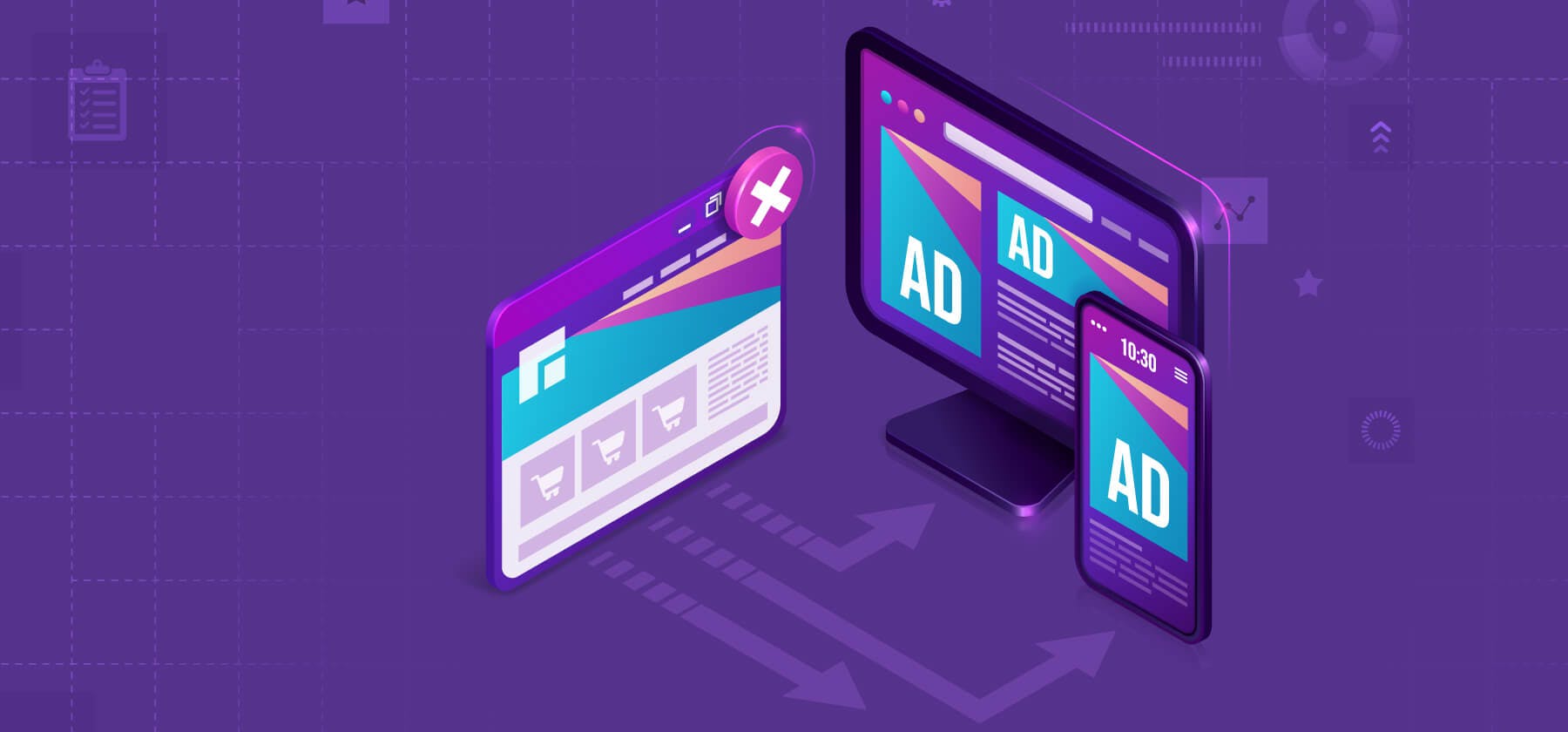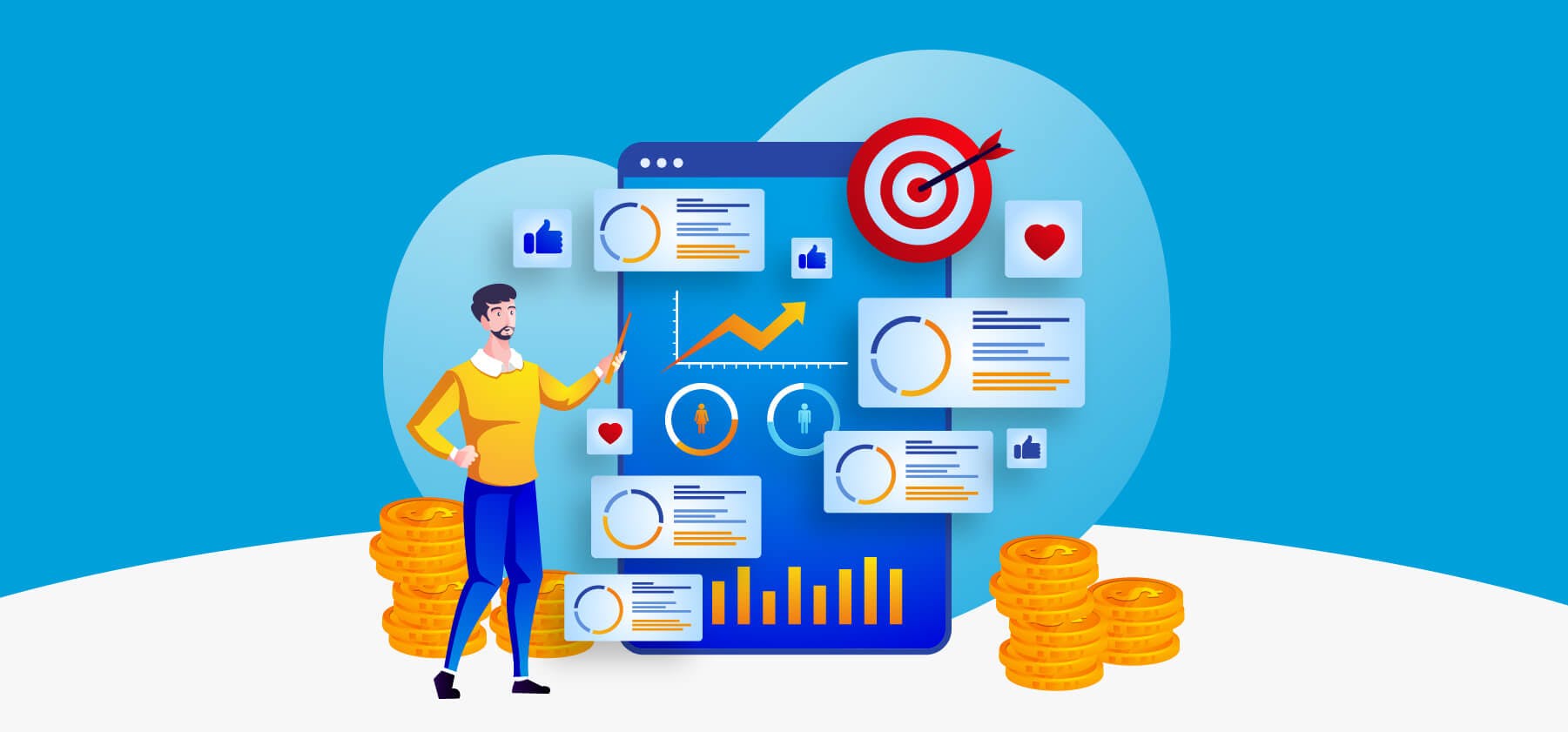If you're passionate about programmatic advertising and the world of ad tech, you've come to the right place. This blog series is your ultimate guide, unraveling the complexities of programmatic advertising and providing the essential insights you need. From understanding its transformative impact on the ad tech industry to exploring different programmatic ad formats and the benefits for both advertisers and publishers, this guide is your gateway to the future of advertising.
The introduction of programmatic advertising revolutionized the ad tech industry. In the pre-programmatic era, digital media relied on cumbersome Insertion Orders (IO) for ad placements, hindering scalability as the online world expanded. Programmatic advertising didn't eliminate the need for human intervention, but it significantly reduced the manual processes of buying and selling ad inventory. No more negotiations, insertion orders, or Requests For Proposals (RFPs) – programmatic streamlines the process.
Even mid-sized programmatic campaigns and inventory transactions require minimal human intervention to optimize profitability. With the marketing industry buzzing about programmatic advertising, it's crucial to understand what it achieves and how it differs from traditional display marketing.
What is Programmatic Advertising
Programmatic advertising is the automated buying and selling of digital ad space. In the past, this process involved manual ordering, ad placement, and reporting. Today, programmatic ads enhance efficiency and effectiveness by streamlining the process.
Programmatic platforms have expanded their ad inventory and databases, making it easy to access various formats and channels. The key differentiator is the use of automation in programmatic media buying, ensuring the right ads are delivered to the right audience at the right time and place.
Think of programmatic as an umbrella term encompassing various programmatic purchase types, which we'll explore in detail later in this article.
Why Use Programmatic Advertising
Programmatic advertising is poised for continued growth. Managing ad space can be challenging for both publishers and advertisers, and manual negotiations for ad placements are time-consuming. Programmatic display advertising offers an intelligent and rapid alternative to traditional manual processes, benefiting both sides of the ad tech industry.
Who Adopts Programmatic Advertising
Companies looking to promote on digital screens often turn to programmatic ads. Publishers who have integrated native advertising on their websites or apps have played a pivotal role in propelling programmatic advertising to new heights. Native advertising through programmatic is less affected by ad blockers and provides marketers ample opportunities to refine and improve ads for campaign success.
Different Types of Programmatic Ad Formats
Programmatic advertising platforms support a range of ad formats, catering to the diverse preferences of publishers and advertisers. Some of the most popular programmatic ad formats include:
- Banner Ads: Rectangular or square-shaped ads commonly found at the top, bottom, or sides of web pages or app screens, often used for brand awareness.
- Native Ads: Seamlessly blend with platform content, matching visual design and layout for a less intrusive and more engaging user experience.
- Offerwall Ads: Offerwall ads provide users with a selection of offers, tasks, or surveys to complete in exchange for in-app rewards. They are commonly used in mobile gaming apps.
- Interstitial Ads: Full-screen ads at natural transition points within apps or websites, often used for high-impact advertising.
- Rewarded Ads: Typically video ads that users can choose to watch in exchange for in-app rewards, offering a value exchange for users.
- Rewarded Interstitial Ads: Similar to rewarded ads, these are full-screen ads that offer rewards when users interact with them. They provide a positive user experience.
- Instream Video Ads: Short video clips appearing before, during, or after video content on platforms like video-sharing and streaming services.
- Outstream Video Ads: These video ads play outside of video content, often within articles or between website content. They are suitable for websites that don't produce their video content.
- Instream Audio Ads: These are audio advertisements that play before or during audio content, such as podcasts, music streaming, or online radio.
- App Open Ads: These ads appear when a user opens an app. They offer a full-screen experience and can be used for brand promotion or showcasing special offers.
- Widget Ads: These ads are small, interactive elements that can be placed within an app's interface to engage users. They often promote products or features.
- Custom Ads: These ads are tailored to specific campaign requirements and can include a combination of text, images, videos, or interactive elements.
- In-Page Push Ads: These ads are notifications that appear on a website's page, providing real-time updates or promotional content.
- Parallax Ads: These ads use scrolling effects to create a sense of depth and interactivity, often used in storytelling or immersive experiences.
Difference Between Programmatic Advertising and Display Ads
The line between programmatic and display advertising can sometimes blur, especially with Google's advancements in automated and real-time bidding. The primary distinction lies in the ability to purchase ads across platforms.
| Aspect | Programmatic Advertising | Display Ads |
|---|---|---|
| Type of Ads | Online advertisements placed automatically | Digital visual ads in various formats (e.g., banners, videos, images, text) |
| Buying Process | Automated through software | Manual placement and negotiation with human representatives |
| Network | Ad space purchased across an open network of platforms | Ads positioned within a single ad network (e.g., Google Display Network) |
| Targeting | Precise targeting using audience data and real-time data | Limited targeting options, often based on site content or keywords |
| Real-Time Adaptability | Ability to alter ads in real-time based on user data | Limited real-time adaptability |
| Interaction | Involves the use of Demand-Side Platforms (DSPs) and Supply-Side Platforms (SSPs) | Typically involves interactions with individual publishers or networks |
| Control | Offers more control over ad placement and bidding | Less control, often relying on the publisher's network |
| Auction Types | Various programmatic auction formats (e.g., real-time bidding, header bidding) | Less sophisticated auction mechanisms |
| Preferred Deals | Programmatic guaranteed deals without auction bidding | N/A (typically not part of traditional display ads) |
| Platforms | Involves DSPs, SSPs, Ad Exchanges, and DMPs | Mainly relies on ad networks and direct publisher interactions |
Programmatic advertising offers the flexibility of buying ad space across an open network of platforms using Demand-Side Platforms (DSPs) and Supply-Side Platforms (SSPs). This versatility contrasts with traditional display advertising within a single ad network, such as the Google Display Network.
The following are frequently under the control of advertisers when using programmatic and display:
- Audience
- Budget
- Creative and assets
- Bidding
- Placements
Purchasing and Selling
 Server-side Header Bidding Methodology
Server-side Header Bidding MethodologyProgrammatic advertising involves various auction formats that describe how advertisers acquire inventory. Beyond auctions, direct methods of sale and purchase are also available, adding further control over the process.
Let's explore the programmatic advertising bidding types:
- Header Bidding: Boosts competition by allowing publishers to offer their inventory to multiple ad exchanges simultaneously before going to ad servers.
- Exchange Bidding: A server-side approach selling ad inventory to exchange networks and SSPs, sometimes confused with Google's response to header bidding.
Below are some of the programmatic advertising deals:
- Private marketplace: Occurs when publishers have contracts with a select group of advertisers, often commanding premium prices due to high demand.
- Open-Auction: Here, Ad Exchange matches buyers and sellers for the highest offer.
- Preferred Deals: Advertisers select advertising spaces before entering the private or open market, often known as "spot buying".
- Programmatic Guaranteed: Similar to preferred deals but without auction bidding, with fixed price agreements between publishers and advertisers.
Some more forms of programmatic advertising transactions:
- First-Price Auction: The advertiser who offers the highest price for an impression wins, and they pay the publisher. The highest bidder in a first-price auction sets the impression's price.
- Second-Price Auction: The second-highest bidder decides the cost of an impression. Even though the highest bidder only pays a cent more than the advertiser who placed second, they still win.
How Does Programmatic Advertising Work
Programmatic advertisements assist in bridging the gap between publishers—those with the app or website ad space (or "ad inventory") to sell—and advertisers—those looking to purchase the ad space to promote their brands.
An advertiser contacts their programmatic ad agency or trading desk when they want to initiate a programmatic campaign to market their goods or services. To achieve the campaign's objective, the agency automates the acquisition of ad impressions using a Demand-Side Platform (DSP). With DSP, marketers and their agencies can buy ad inventory from several publishers.
A Data Management Platform (DMP), which handles audience data, is used by the DSP to ensure that the advertisements get directed at the appropriate audience. By considering several variables, including location, demographics, user behavior, and online activity, this data is used to target the appropriate audience.
The publisher app or website sends an ad request to the Supply-Side Platform (SSP) whenever someone who is part of the advertiser's target audience visits the app or website. To boost the value of each impression, an SSP is utilized by publishers to market advertisements. With the DSP hooked in, the SSP conducts an auction among its buyers.
 How Does Programmatic Advertising Work
How Does Programmatic Advertising WorkThe DSP evaluates the advertisement and compares it to its data and target characteristics using the data it gets from the SSP. This is taken into account when determining the first impression's bid price. The process is real-time bidding and is held in the SSP or ad exchange in real-time.
The bidding is completed in under 100 milliseconds, even though it appears like a lengthy process. After the impression is purchased, the ad gets posted on the publisher's website. When a new person visits the website or refreshes, the process starts over.
Programmatic ad platforms are a component of the ecosystem as a whole. Each component operates in concert with the others to benefit advertisers and publishers.
The Demand-Side Platform, Supply-Side Platform, Data Management Platform, and Ad Exchange are a few of the platform categories mentioned above. Publishers can use a variety of channels to discover the best products and acquire access to the advertisers who can best meet their markets.
To better understand what each programmatic advertising platform does and for whom, let's take a closer look at each one in turn.
The Programmatic Advertising Ecosystem
The programmatic advertising ecosystem comprises four primary platforms:
- Supply-Side Platform (SSP): Publishers use SSPs to manage ad inventory, optimizing the value of ad impressions.
- Demand-Side Platform (DSP): Advertisers utilize DSPs to automatically purchase ad spaces, targeting the right audience.
- Ad Exchange: DSPs and SSPs converge at the Ad Exchange to buy and sell ads.
- Data Management Platform (DMP): DMPs collect, manage, and analyze data, enabling precise ad targeting.
What Does it Cost
The cost of programmatic advertising depends on factors like your chosen DSP, competition, and target market. Generally, the more specialized your audience, the higher the cost per thousand impressions (CPM). Whether you're a small business or a large advertiser, programmatic advertising can fit into your budget.
The Benefits of Programmatic Advertising for Advertisers
- Capacity to Scale: Access a broader audience by purchasing ad space from various ad inventories.
- Efficiency: Streamlined targeting ensures more relevant ads, maximizing investment.
- Target-Specific Abilities: Allocate budgets more effectively with precise targeting.
- Real-Time Adaptability: Modify ads in real time based on impression data.
Advantages of Programmatic Advertising for Publishers
- Relevancy: Display relevant ads to visitors, enhancing the user experience.
- Communication: Streamline interactions with advertisers and automate ad space sales.
- Simplicity: Automated processes reduce the time spent finding advertisers.
- Efficiency: Increase revenue from available ad space while reducing costs.
Concluding Words
The future of programmatic advertising is promising, with accessibility improving, especially for smaller businesses. If you want to explore the top programmatic advertising platforms, be sure to check out our dedicated blog on the topic.
Learn more about the best programmatic advertising platforms in our dedicated blog.
The only ad platform built for developers by developers.
Contact us now for a product that fits your needs! It’s quick, simple and easy.



